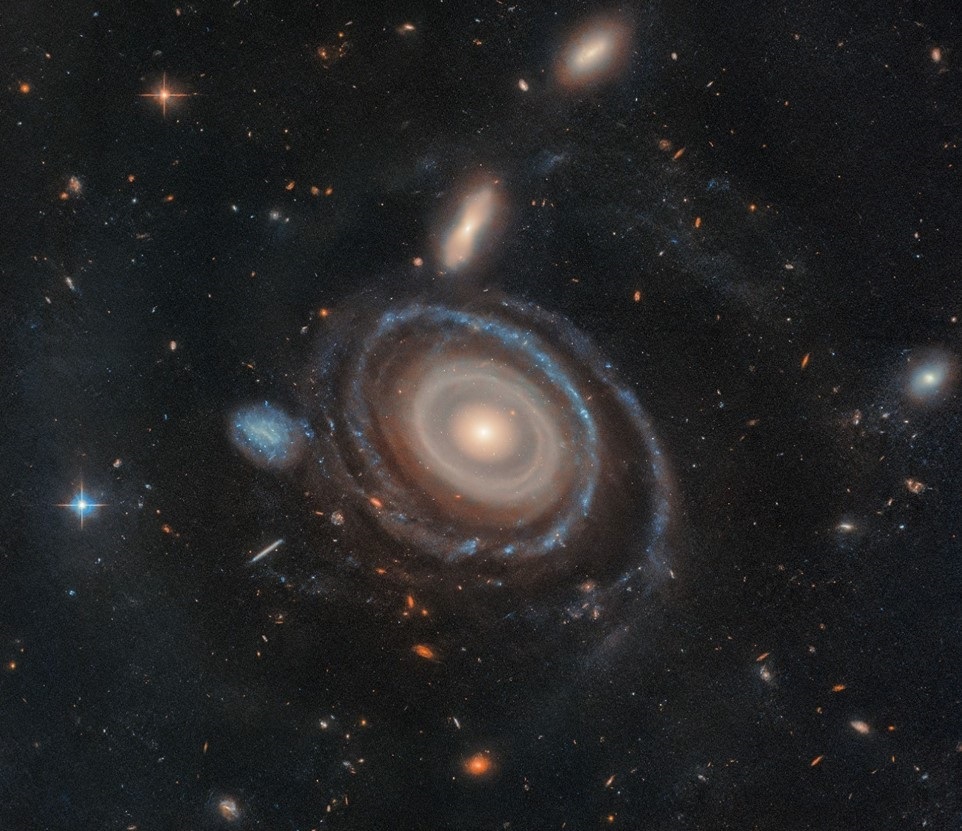Earth and our entire galaxy could be inside a mysterious giant black hole.

Earth and our entire Milky Way galaxy could be inside a mysterious black hole that is causing the cosmos to expand faster here than in neighboring regions of the universe, according to astronomers at the University of Portsmouth (UK).
Their theory is a potential solution to the so-called 'Hubble tension' and could help confirm the true age of our universe, estimated at around 13.8 billion years. The latest research, shared at the Royal Astronomical Society's National Astronomy Meeting (NAM) in Durham, UK, shows that sound waves from the early universe—essentially the sound of the Big Bang—support this idea.
The Hubble constant was first proposed by Edwin Hubble in 1929 to express the expansion rate of the universe. It can be measured by observing the distance of celestial objects and the speed at which they are moving away from us. The obstacle, however, is that extrapolating measurements from the distant, early universe to the present using the standard cosmological model predicts a slower expansion rate than measurements from the nearby, more recent universe. This is the Hubble tension. "One possible solution to this inconsistency is that our galaxy is near the center of a large local void," explains Dr. Indranil Banik of the University of Portsmouth.
" This would cause matter to be pulled by gravity towards the higher-density exterior of the vacuum, causing it to become emptier over time. As the vacuum empties, the speed of objects moving away from us would be greater than if the vacuum did not exist. This, therefore, gives the impression of an increased local expansion rate. The Hubble tension is largely a local phenomenon, with little evidence that the expansion rate disagrees with expectations in standard cosmology further back in time. Therefore, a local solution, such as a local vacuum, is a promising way to solve the problem."
For the idea to be viable, Earth and our solar system would have to be near the center of a void about a billion light-years across and with a density about 20 percent lower than the average of the universe as a whole.
Direct galaxy counting supports the theory, because the number density in our local universe is lower than in neighboring regions. However, the existence of such a large and deep void is controversial because it doesn't fit particularly well with the Standard Model of cosmology , which suggests that matter today should be more evenly distributed on such large scales.
Despite this, new data presented by Dr. Banik at NAM 2025 show that baryon acoustic oscillations (BAOs)—the “sound of the Big Bang”—support the idea of a local void.

LEDA 1313424, aptly nicknamed Bullseye. Photo: NASA, ESA, IMAD PASHA (YALE), PIETER VAN DOKKUM (Y
"These sound waves traveled only a short time before freezing in place once the universe cooled enough for neutral atoms to form," the expert explains. "They act like a standard ruler, whose angular size we can use to trace the history of cosmic expansion. A local vacuum slightly distorts the relationship between the BAO angular scale and the redshift, because the velocities induced by a local vacuum and its gravitational effect slightly increase the redshift on top of that due to cosmic expansion."
Considering all available BAO measurements from the past 20 years, we show that a vacuum model is about 100 million times more probable than a non-vacuum model with parameters designed to fit observations of the CMB taken by the Planck satellite, the so-called homogeneous Planck cosmology.
The next step for the researchers is to compare their local vacuum model with other methods for estimating the expansion history of the universe, such as cosmic chronometers . This involves observing galaxies that are no longer forming stars. By observing their spectra, or light, it is possible to determine what kind of stars they have and in what proportion. Since more massive stars have shorter lifetimes, they are absent in older galaxies, allowing a galaxy's age to be determined.
Astronomers can then combine this age with the galaxy's redshift (how much the wavelength of its light has stretched), which tells us how much the universe has expanded while the galaxy's light traveled toward us. This sheds light on the history of the universe's expansion.
eltiempo




